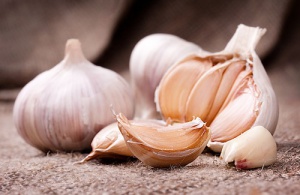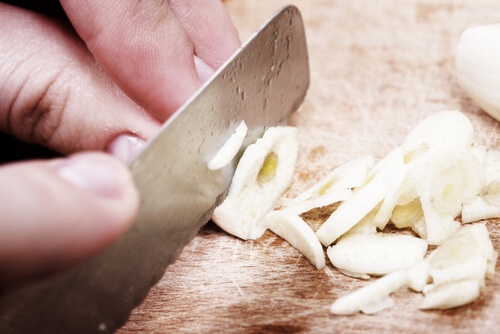Medicinal Ways of Preparing Garlic


Reviewed and approved by the nutritionist Maria Patricia Pinero Corredor
Garlic has countless health benefits and medicinal properties. However, it’s important to know how you should eat it in a variety of different situations. Read on to discover the different ways of preparing garlic.
Different ways of preparing garlic

You can eat garlic raw. Experts recommend that you eat a maximum of two or three garlic cloves in the morning. You can also grind it and add the juice from half of a lemon to try to counteract its strong flavor.
Eating raw garlic everyday is recommended to be able to benefit from its therapeutic effects that offer relief to many parts of the body.
You’ll know that garlic causes very bad breath if eaten regularly. That’s why it’s important to eat it with lemon. You can also chew a piece of cinnamon afterwards, which will help you a little.
See also: 10 Incredible Health Benefits of Cinnamon
Boiling garlic
Another way of preparing garlic is by boiling it. Firstly, you should get three or four garlic cloves and then boil them in a half a pint of water. This way of consuming it is easier to get used to because the garlic will lose a lot of its strong flavor and its unpleasant smell, due to the boiling.
As a result, you’ll also be able to drink more of it – up to two bowls a day. Because of this, the body odor caused by garlic won’t be as strong.
Ground garlic with vinegar
Another way of preparing garlic is to grind it and soak it in vinegar. Its flavor is very strong. However, there are many people who like it and don’t care about the bad odor that it can cause.
These people insist that they don’t care what it does to their breath and other parts of their body. They say they only care about being healthy and they can achieve this with garlic.
Nonetheless, as we have always said, what’s most important is to prevent sicknesses and prevent them from appearing. In order to do this, it is very important to consume garlic daily, no matter how you eat it. Thanks to garlic, you can help to prevent a great number of illnesses.
All cited sources were thoroughly reviewed by our team to ensure their quality, reliability, currency, and validity. The bibliography of this article was considered reliable and of academic or scientific accuracy.
- Carr, A. C., & Maggini, S. (2017). Vitamin C and Immune Function. Nutrients, 9(11), 1211. https://doi.org/10.3390/nu9111211
- El ajo: más allá de su sabor. (2018, June 7). Fundación Española del Corazón. https://fundaciondelcorazon.com/blog-impulso-vital/2399-el-ajo-mas-alla-de-su-sabor.html
- Ho, C. W., Lazim, A. M., Fazry, S., Zaki, U. K. H. H., & Lim, S. J. (2017). Varieties, production, composition and health benefits of vinegars: A review. Food chemistry, 221, 1621–1630. https://doi.org/10.1016/j.foodchem.2016.10.128
- Maganto Fraile, A. (2018). Análisis de los consejos nutricionales sobre la salud cardiovascular en base a la evidencia científica. Universidad de Castilla-La Mancha. https://ruidera.uclm.es/xmlui/handle/10578/18193
- Peiró, P. S., & Lainez, M. C. T. (2020). El ajo: “allium sativum.” Medicina naturista, 14(1), 123–126. https://dialnet.unirioja.es/servlet/articulo?codigo=7248988
- Percival S. S. (2016). Aged Garlic Extract Modifies Human Immunity. The Journal of nutrition, 146(2), 433S–436S. https://doi.org/10.3945/jn.115.210427
- Varshney, R., & Budoff, M. J. (2016). Garlic and Heart Disease. The Journal of nutrition, 146(2), 416S–421S. https://doi.org/10.3945/jn.114.202333
- Zeng, T., Guo, F. F., Zhang, C. L., Song, F. Y., Zhao, X. L., & Xie, K. Q. (2012). A meta-analysis of randomized, double-blind, placebo-controlled trials for the effects of garlic on serum lipid profiles. Journal of the science of food and agriculture, 92(9), 1892–1902. https://doi.org/10.1002/jsfa.5557
This text is provided for informational purposes only and does not replace consultation with a professional. If in doubt, consult your specialist.








